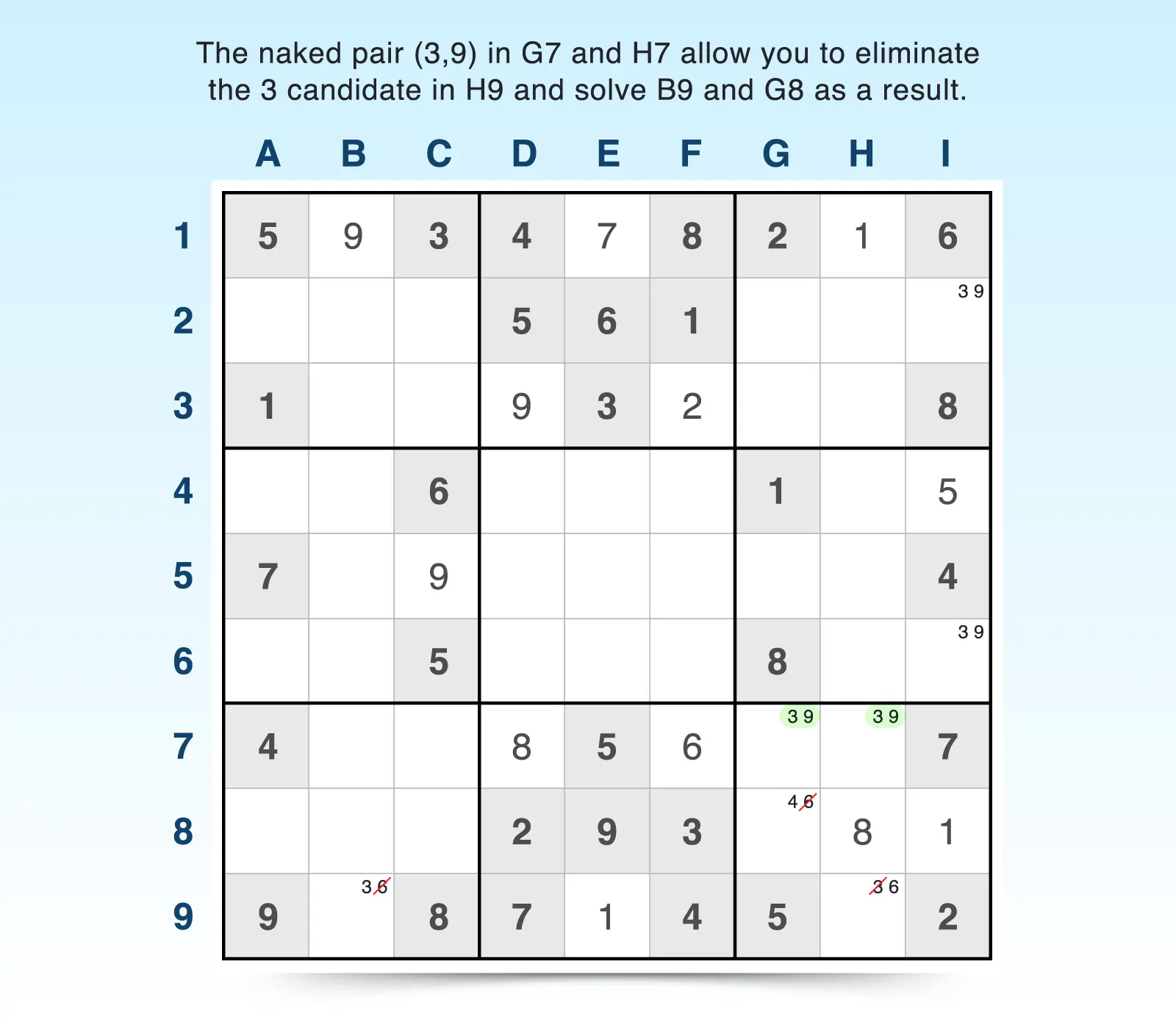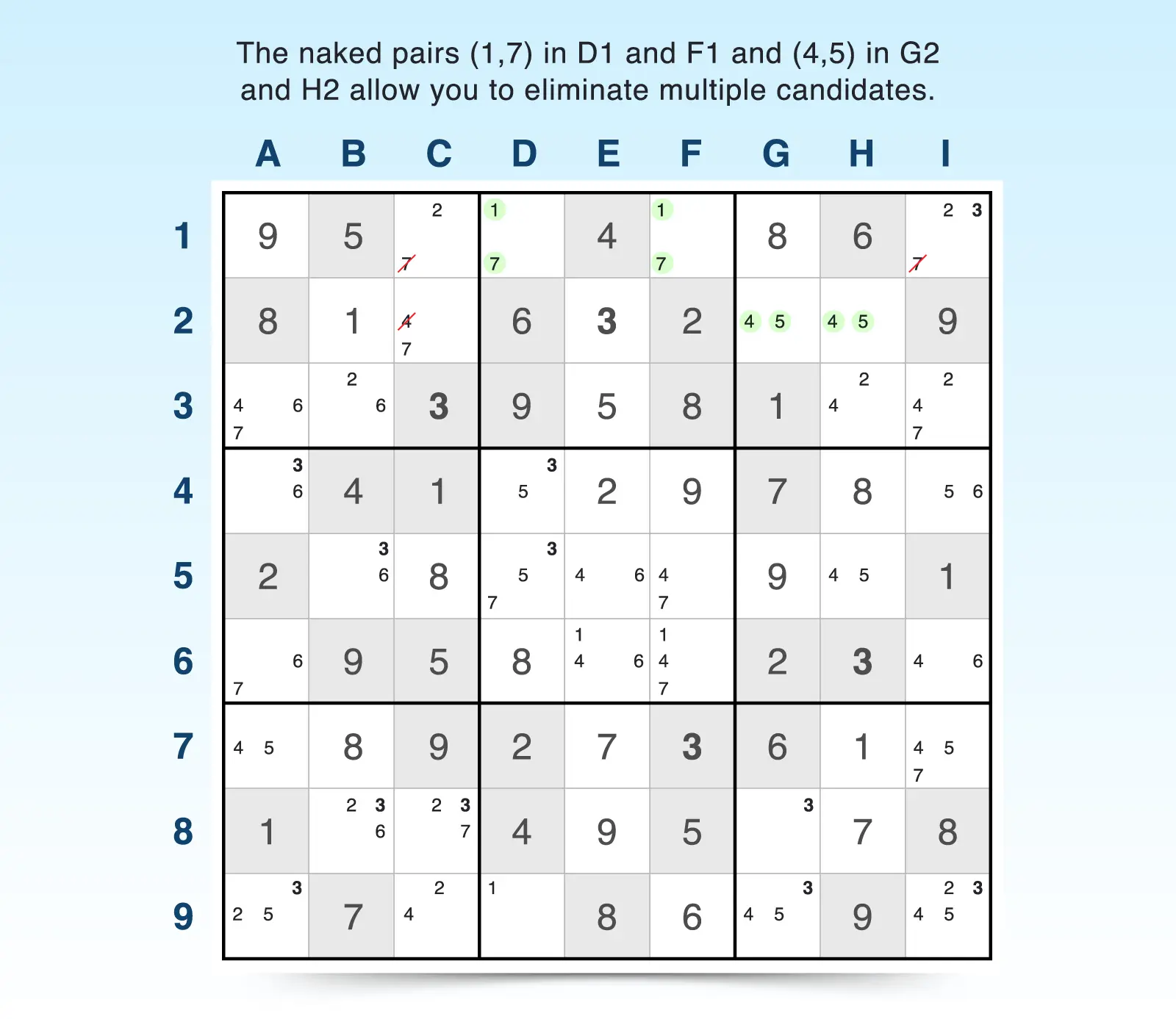Solve Sudoku using Naked Pairs Triples or Quads
Naked pairs and naked triples are Sudoku solving techniques that help you eliminate potential candidates within a unit. They are helpful for solving easy, medium, and even hard puzzles.
To refresh your Sudoku terminology, candidates - also called pencil marks - are the small numbers written in a cell to indicate possible values. A unit refers to a full row, column, or block in the grid.
The more candidates you can eliminate, the closer you are to solving the Sudoku puzzle. Our tutorial will show you how to use these basic techniques to level up your Sudoku skills.
Naked Pairs
A naked pair occurs when two cells in the same row, column, or block contain only the same two candidate numbers. Since these numbers must be the solutions for those two cells, all other instances of those candidates within the unit can be eliminated. If you find a naked pair in a row or column, it could even help you find a unique rectangle.
Naked Pair in a Block
In the example below, focus on the bottom right block. The naked pair (3,9) appears in cells G7 and H7. This allows us to eliminate the 3 candidate in H9.
H9 is then left with a 6 naked single, meaning that 6 is the answer to that cell. Now you can eliminate the 6 candidate in B9, leaving you with 3 as the solution and the 6 candidate in G8, which makes 4 the solution.

Naked Pair in a Row
This naked pair technique example features multiple pairs of candidates in Rows 1 and 2.
Row 1 has the naked pair (1,7) in cells D1 and F1. This allows you to eliminate the 7 candidates in cells C1 and I1 and find the answer for C1 (2). Now that you have the answer for C1, you can eliminate the candidate (2) in I1, leaving the single candidate and answer to that cell, which is 3.
Similarly, Row 2 has the naked pair (4,5) in cells G2 and H2. This allows you to remove the 4 candidate from C2 and discover the answer to that cell (7). Because the hidden pair (4,5) is also within the top right block, you can remove the 4 candidates from H3 and I3, finding that the answer for H3 is 2, which makes 7 the answer for I3.

If you can't make eliminations with the naked pairs, you can try using them in the forcing chains technique instead. This technique is the basis for hidden pairs, where two cells within the same unit share two unique candidate numbers. However, the cells may contain other candidate numbers too, which is what makes the pair of candidates hidden.
Naked Triples
A naked triple occurs when three cells within the same row, column, or block have three possible candidates. However, each cell doesn't have to have all three candidates - some may only have two. If the triples have other candidates in their cells, you may have found a hidden triple instead, which has slightly different criteria.
As long as the three numbers are the only possible candidates across the three cells, you know they must occupy the cells in some order, allowing you to eliminate the candidates from other cells within the unit.
For example, D2, E2, and I2 are a naked triple because they contain the overlapping candidates 2, 6, and 9. That means no other candidates in Row 2 can contain 2, 6, or 9, so you can eliminate the 6 and 9 candidates from B2.

These strategies are suitable for beginner and intermediate players. They�ll help you find answers when simpler techniques like crosshatching aren�t doing the trick. Test them out on your next online Sudoku game.